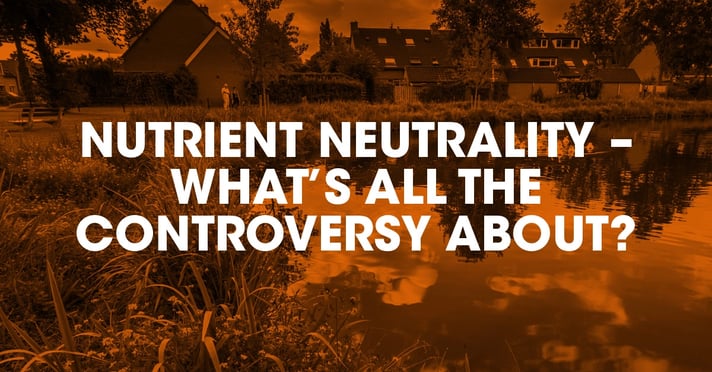What is nutrient neutrality?
When previously undeveloped land is used for building, water that escapes the site can have a detrimental effect on local wildlife because it contains extra nutrients.
Usually this comes from waste water from houses, but it also comes from surface water that runs off during building, waste water from the operations of a business, and agricultural run-off from fertilisers or animal waste.
While “extra nutrients” might sound like a good thing for a breakfast bar, these extra nutrients can speed up the growth of certain plants in an area, creating undesirable outcomes for local habitats and ecosystems.
Some sites across England are considered to be protected sites because of their vulnerability to the effects of extra nutrients. When any development goes ahead on protected sites, care must be taken to make sure the nutrient balance in the local area is preserved – a development can’t go ahead until the local planning authority is certain there won’t be a detrimental effect on nutrient balance.
Developers do have strategies at their disposal to preserve nutrient neutrality, but many of them are emerging, or specific to individual areas – there are very few “blanket” approaches that developers can fall back on to guarantee nutrient neutrality.
To complicate matters for some developers, in March 2022 there has been a proposed expansion of 42 new local authorities covered under nutrient neutrality legislation, which has caused some home building projects to be delayed.
Why is nutrient neutrality controversial?
Nutrient neutrality itself isn’t a controversial subject, it’s just a scientific term, but the effect of expanding the coverage of protected sites hasn’t been met with open arms by construction firms keen to break ground.
The Home Builders Federation (HBF) has done their own research into the economic impact of the most recent building delays due to the 42 new protected sites.
HBF’s figures are stark reading, estimating that a 10-50% reduction in home delivery across the seven affected catchment areas would result in negative outcomes for homes and the economy such as –
- A loss of up to 12,700 new homes.
- An annual reduction of between £4.4m and £2.2bn in economic output.
- A reduced opportunity to create, or support, between 8,100 and 40,560 direct, indirect, and induced jobs per year.
- A loss of between £2.9m and £14.7m in council tax revenue.
Their full report, along with the rest of their conclusions, are available in HBF’s report here.
The figures produced by HBF are startling, and highlight the issue we discussed at the start of this article – protecting England’s natural ecosystems from undue disruption and the effects of pollution, and the pressing needs of the UK’s economy to keep building.
While there’s no easy answers, the building industry is open to discussion with the government over the issue.
What’s happening now?
Developers are delaying projects while they find ways to guarantee nutrient neutrality across thousands of sites in the UK, but the argument around the most recent nutrient neutrality protected site expansion is far from settled.
Organisations like HBF are working with relevant public departments in an attempt to find an agreement on nutrient neutrality that better serves the needs of England’s home builders and buyers without undue compromise on protecting UK wildlife from the detrimental effects of nutrient excesses.
If you have any concerns that your proposed development might be affected by nutrient neutrality laws, you’re always welcome to reach out to your account manager for information.


HAVE YOUR SAY...